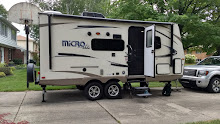



Today was our day to see Volcanoes National Park. Different sources said the 90 mile drive would take us anywhere from an hour and half to three hours so we wanted to leave by 7:30. We followed Highway 11 south, taking a side road 12 miles down to South Point, the southern-most point in the US. The windswept point is home mostly to cattle and a small wind farm now. There are canoe lifts which are apparently used to lower and hoist canoes from the cliffs to the raging waves 50 feet below, but it was hard to believe anyone would do it in those prevailing winds. After climbing around on the lava surface for a while we climbed back in the car and continued on to the Black Sand Band beach of Punalu’u. The beach is just a short walk from the parking lot. It is famous not only for the black sand but also for the very rare hornbill and less rare but still endangered green sea turtles. The hornbills come there only to nest from May to October and there are only 55 known females in Hawaii. The green sea turtles come to the bay to feed on the algae on the rocks. After watching the waves for a bit we realized that the water was teaming with green turtles, impossible to count because of the wave action. It is fascinating to watch for them to stick out a flipper or bring out their whole head to breath. Finally tearing ourselves away we drove on to the Park, arriving at the Visitors Center about noon, just as a volunteer host who was a native of Oahu began a talk about the geography of the island and volcanoes, along with a mini lesson on how to pronounce Hawaiian words. He then led a hike but we wanted to eat so we passed on that part. It became abundantly clear that we were in a rain forest as light misty rains came and went. There were no covered picnic tables so we ended up enjoying our wine, bread and cheese in the car in the parking lot—not very picturesque! We went into the Center to watch three short films about the park and the present volcano action, and looked at the displays. A ranger went over the map with us, making note of what we should try to do with the rest of our day. We were a bit disappointed to find out that more than half of the Crater Rim Drive was closed because of the presence of high levels of sulfuric acid. But she encouraged us to take the Crater Rim Drive to Chain of Craters Drive and highlighted spots to stop along both. At our first stop there were three trails; one to a lava tunnel, one down to the lava lake of Kilauea and one along the rim of the cauldron. When Marv, Heidi and I returned to the car, feeling that we couldn’t see much because of the increased rain, Kris lost us. He hiked the half mile to the tunnel and returned, since he hadn’t found us. Heidi and came across him on the trail and explained what had happened. It all took about half an hour but there was no harm done. Chain of Craters Drive descends 4000 feet in 17 miles. Along it we climbed a couple of viewing platforms and took in the eerie lava landscape. In the process we are learning to identify pahoehoe and a’a, two kinds of lava flow. Near the coastline we took a mile and a half hike to Pu’u Loa, the largest collection of petroglyphs in Hawaii. Etched into the lava 700 years ago are 23,000 figures and shapes. 16,000 are holes, circles or concentric circles. Oral history tells us that they were ceremonial depositories for babies’ umbilical cords, left to appeal to the gods to protect the child into adulthood. It was a very spiritual spot. From there we continued quite literally to the end of the road. In 1983 when the Pu’u O’o vent spewed, the lava flowed down from the cauldron to the sea, right across the road for several miles. And that was the end of that circle drive! Marv and I opted to hike what they said was half an hour but was really more like a mile to get some pictures on the lava. As we retraced our journey there were more rains coming in so we saw a spectacular double rainbow over the black lava. Back at the top, we hiked a half mile or so through the rainforest to go through the very wet lava tunnel cave, which is partly lighted. It was close to dinner time so we headed into Volcano Village but found long waits and expensive meals at the two open restaurants. Instead we opted for coffee- and treats-to-go at a small café. It was dark when we returned to the National Park so we took Crater Rim Drive the other direction to see steam vents in the headlights, the Jaggar Museum (the first scientist to really study the volcanoes) and most importantly, the glowing Kilauea lava dome. No one knows when Kilauea will erupt again, but the growing dome makes it clear that it will happen again. Driving back to Kona, we were happy to come across the Shaka restaurant and bar (the southern-most restaurant in the US) still open and serving food. We found out that Duke had squeaked by Butler and ate dinner about 8:30 or 9:00. When we got back to the Kona Bali Kai, we were all exhausted from our full day, no one more than Marv, who is doing all the driving.

No comments:
Post a Comment